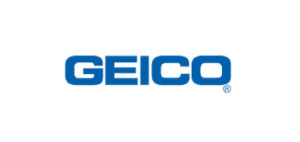Is your subfloor hiding a nasty secret that could be threatening your home’s structure and your health? Mold on subfloors not only poses health risks, but can also lead to significant structural damage. Immediate treatment is crucial for maintaining air quality and protecting the integrity of home structures.
Mold’s presence isn’t always visible, but it can be lurking beneath your floors, particularly in areas with high moisture levels. Did you know that up to 30% of homes with moisture issues experience black mold growth? And with about 20% of the population being allergic to mold, the health implications can be severe. This makes understanding how to get rid of mold in subfloor areas an essential skill for any homeowner.
One effective method for subfloor mold remediation involves the use of Sodium Hypochlorite, commonly known as household bleach. This chemical works by dissolving the essential cell wall components of mold, rendering it non-allergenic. However, handling bleach requires careful attention to safety protocols. It’s paramount to ensure concentrations don’t exceed 10% and that the space is well-ventilated during application. Following this initial treatment, a proper sealing process is necessary to encapsulate any residual spores or fragments, thus preventing further spread.
Despite the effectiveness of household bleach, utilizing safety equipment can reduce the risk of injury during mold removal by up to 50%. Not to mention, the use of safety goggles and masks can prevent up to 90% of injuries related to flying debris and inhalation of harmful particles during the process. With such protections in place, you can tackle subfloor mold with greater confidence.
Key Takeaways
- Mold on subfloors can pose significant health risks and structural damage.
- About 20% of individuals are allergic to mold, highlighting the need for careful remediation.
- Using Sodium Hypochlorite (household bleach) effectively eradicates mold when handled safely.
- Safety equipment reduces injury risk by up to 50% during mold removal.
- Sealing treated areas prevents recurrence of mold growth.
Identifying Mold in Your Subfloor
Spotting mold in your subfloor is key to keeping your air clean. In the U.S., mold in subfloors can lead to up to 18% of indoor air quality issues. Look out for dark stains, patches on flooring, and a musty smell. These signs mean you might need a subfloor mold check.
Getting a detailed mold check is vital. About 50% of homes have layers of flooring, which can lead to mold. Signs like bubbling or warping in flooring suggest water damage and mold. Catching mold early stops it from spreading and keeps you and your family healthy.
To tackle mold, find and fix moisture sources. Check plumbing, bathrooms, and kitchens for leaks or dampness. Moisture meters can pinpoint where the problem lies. For safe detection, experts suggest wearing protective gear to avoid mold spores.
Regular checks and upkeep can stop mold before it starts. Make sure gutters and downspouts direct water away from your home. Inspect water fixtures often and fix any leaks, especially under toilets. Keeping air flowing and humidity levels in check helps prevent mold. If unsure, professional mold solutions can safely remove mold.
Steps for Effective Mold Removal in Subfloor
To get rid of mold in your subfloor, you need a detailed plan. This ensures all mold is gone and doesn’t come back. Here are the key steps to follow:
- Identify and Address the Moisture Source: First, find and fix the moisture problem. This could be a leak, too much humidity, or bad ventilation. Common causes include spills, high humidity, leaks, and poor drainage.
- Secure the Work Area: Use plastic sheeting and tape to keep mold spores from spreading. This is crucial for both DIY and professional mold removal.
- Remove Floor Covers: Take off any floor coverings like carpet, vinyl, or tile. Mold often grows under these, making it hard to find.
- Inspect and Expose the Mold: Look for mold on the subfloor. You might need to cut through plywood or floor joists to find it. Look for water stains, yellow or brown spots, and musty smells.
- Treat the Mold: Use a moldicide or a mix of borax and water to kill the mold. Make sure to cover all moldy areas. Wood might need more treatments.
- Dry the Area: Let the area dry for at least three days. Use fans and a dehumidifier to speed up drying. Keep humidity between 30–50% to prevent mold from coming back.
- Inspect and Treat Floor Joists: Mold can spread to floor joists. Check and treat these areas too. Professionals use special methods for severe cases.
- Seal and Prevent Future Mold: After drying, seal the treated areas to keep moisture out. This is key for preventing mold. Improve ventilation and use a hygrometer to keep humidity below 60%.
By following these steps, you can manage mold in your subfloor effectively. For big mold problems, hiring experts like Elite Remediation & Services is a good idea. They ensure a thorough clean and help prevent mold from coming back.
Conclusion
Removing mold from subfloors makes homes safer and healthier. Mold thrives in humid places like Utah, causing damage and health issues. Black mold is especially dangerous and needs quick action.
Keeping an eye on your subfloor is crucial. Check for leaks and keep humidity levels low to stop mold. Mold can grow fast, so acting quickly is important. The EPA and CDC have tips to help prevent mold.
For big mold problems, getting help from mold removal experts is best. They have the right tools and know-how for safe removal. Insurance might help cover the cost, making it worth it. Keeping your subfloor dry is key to avoiding mold and protecting your home’s value.
















